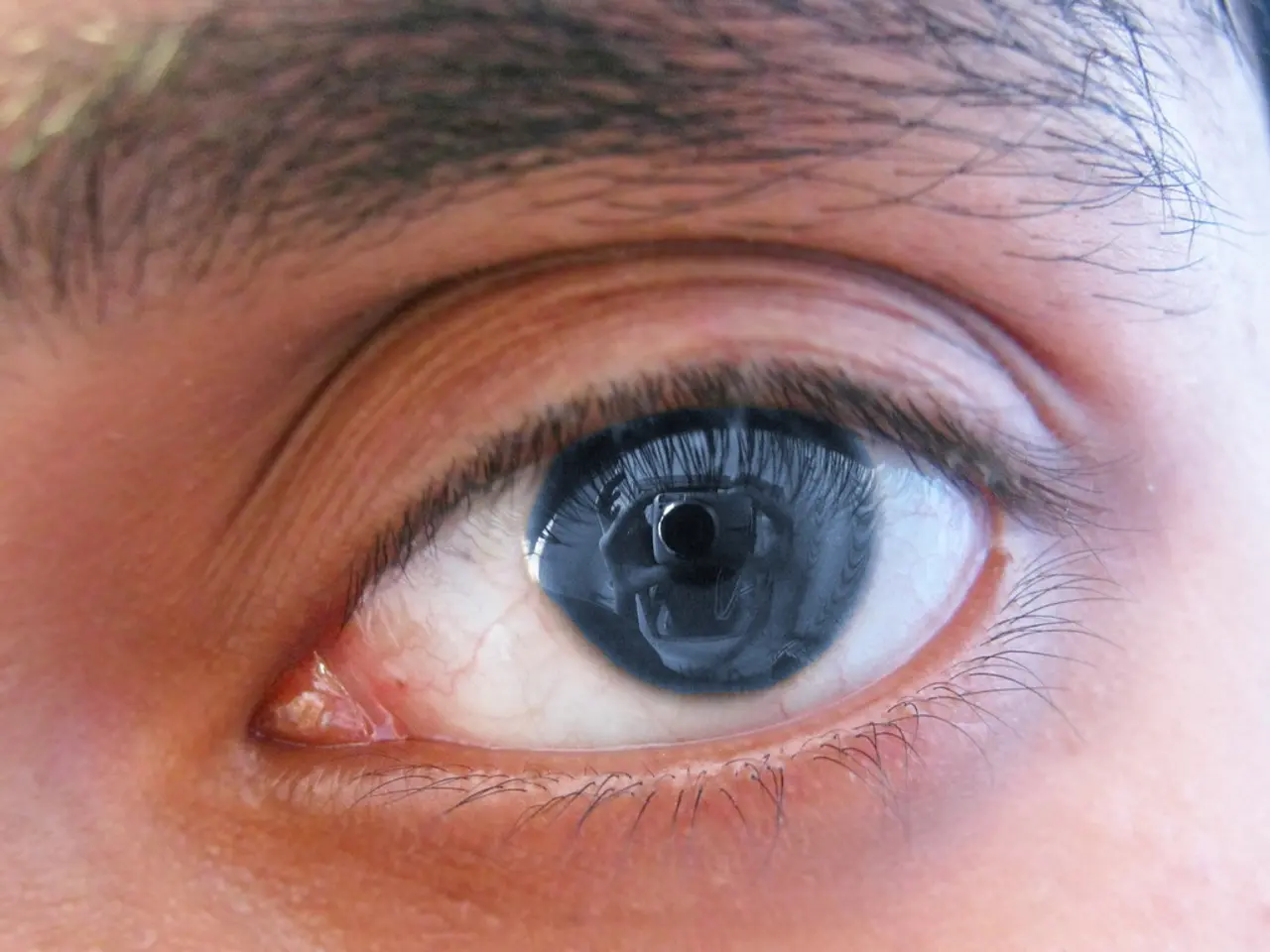Orbital Tissue Inflammation in Thyroid Eye Disease: An Immune-Based Process
Thyroid Eye Disease (TED), also known as Graves' orbitopathy, is an autoimmune disorder that affects the orbital tissues surrounding the eyes. Approximately 25-50% of people with Graves' disease develop TED, a condition characterised by inflammation and tissue changes.
TED presents with several distinctive symptoms, including proptosis (bulging eyes), eyelid retraction or swelling, dry eyes and excessive tearing, diplopia (double vision), eye pain and sensitivity to light, and conjunctival injection (redness and inflammation of the conjunctiva).
The disease progresses through several stages. The inflammatory phase, which lasts 6-18 months, is characterised by proptosis, eyelid retraction, and inflammation. This is followed by the static phase, where there is a decrease in inflammation with minimal improvement, and the quiescent phase, where there is gradual improvement in motility and retraction of muscles.
The primary risk factor for TED is an autoimmune response, often linked to Graves' disease. Other contributing factors include autoantibodies directed against the thyroid-stimulating hormone receptor (TSHR) and insulin-like growth factor I receptor (IGF-1R), a genetic predisposition, and smoking.
During the active phase of TED, the immune system sends out "rogue signals" (autoantibodies) that jam the TSHR on both the thyroid gland and the eye socket's "construction workers" (fibroblasts), causing them to build too much, leading to the expansion of the eye socket. This expansion can result in permanent proptosis, diplopia, and potentially optic neuropathy.
Physicians treat the active phase with immunosuppression, using steroids or biologics. To address the issues arising from the expansion of the eye socket, surgeons perform interventions like orbital decompression or strabismus surgery.
Researchers are developing new targeted therapies, such as Teprotumumab, an IGF-1R inhibitor, which blocks both IGF-1R and TSHR signalling, reducing inflammation and eye bulging. They are also experimenting with anti-IL-6 drugs like Tocilizumab, which target inflammation, and JAK inhibitors, which block inflammatory pathways.
TED imposes a significant physical and psychosocial burden, necessitating early treatment to prevent long-term vision impairment and quality-of-life issues. The cosmetic changes associated with TED, such as proptosis and lid retraction, negatively affect patients' mental health and social interactions. Severe TED significantly impacts both vision and quality of life, and compressive optic neuropathy can cause irreversible vision loss.
- Mental health is a crucial aspect of health and wellness, especially for individuals dealing with chronic diseases like Thyroid Eye Disease (TED).
- The health industry is actively researching new therapies and treatments for various medical-conditions, including TED.
- Medication plays a significant role in managing autoimmune-disorders such as TED.
- Therapy, whether it's psychotherapy or physical therapy, can also benefit individuals dealing with TED.
- Science is fundamental in understanding the causes and seeking solutions for conditions like TED, including cancer, respiratory-conditions, digestive-health issues, and eye-health problems.
- Health and wellness encompass not just physical health but also mental health, sexual-health, family-health, cardiovascular-health, and neurological-disorders.
- Environmental science is vital in examining the impact of climate-change on health, such as the potential triggers of autoimmune-disorders.
- Manufacturing industries play a role in producing gadgets, smartphones, wearables, and smart-home-devices that can aid in health monitoring and management.
- The finance industry is crucial in wealth-management, investments, saving, debt-management, and personal-finance, which are integral parts of overall health and wellness.
- Energy is essential for powering healthcare facilities, research labs, and manufacturing industries that contribute to health and wellness.
- Space and astronomy offer opportunities for scientific advancements that could potentially impact health and wellness, such as understanding the effects of microgravity on the human body.
- Retail outlets sell various health-related products, from medicines to fitness-and-exercise equipment.
- Entrepreneurship and leadership in the health and wellness sector can lead to innovations in therapies-and-treatments, healthcare services, and health-related technology.
- Transportation is vital for patients to access medical facilities and for the delivery of healthcare-related goods.
- Diversity and inclusion in the healthcare industry ensure equal access to care and understanding of various cultural aspects of health and illness.
- Skin-care is an essential aspect of personal health, involving the management of skin-conditions such as eczema and psoriasis.
- The manufacturing industry also produces equipment for industries like cardiovascular-health, such as stents and pacemakers.
- The industry of venture-capital plays a crucial role in funding startups developing new therapies and treatments in various health fields.
- The stock-market can impact personal-finance and wealth-management, which are critical components of overall health and wellness.
- Private-equity firms can invest in healthcare-related businesses, contributing to advancements in health and wellness.
- Saving and debt-management are fundamental aspects of long-term financial planning, which is essential for overall health and wellness.
- The technology industry is responsible for developing gadgets, smartphones, and artificial-intelligence that can aid in health monitoring and management.
- Cybersecurity is essential to protect health data and sensitive information in the digital age.
- Small-businesses, including those in the health sector, play a significant role in creating jobs and contributing to local economies.
- Investing in real-estate can provide a steady income stream that contributes to overall financial stability, which is essential for health and wellness.
- The banking and insurance sectors provide financial services necessary for managing health-related expenses and protecting against unexpected incidents.
- Fintech companies are innovating in areas like digital payments, digital health records, and health insurance, improving accessibility and efficiency in the healthcare sector.
- The smartphone industry has revolutionized health and wellness, with apps for fitness, mental-health tracking, and chronic-disease management.
- Budgeting is a crucial skill for managing personal finances and ensuring financial stability, which is vital for overall health and wellness.
- Technology and innovation in various sectors, from healthcare to finance to retail, are key to improving health outcomes, reducing costs, and enhancing quality of life.




